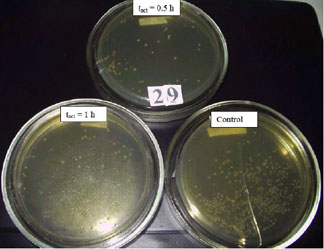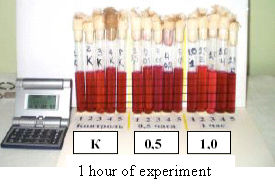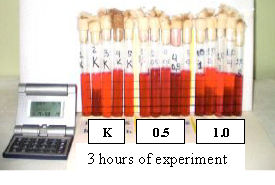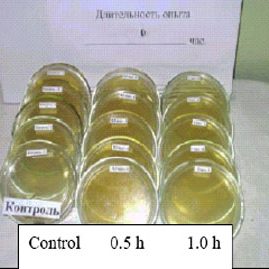
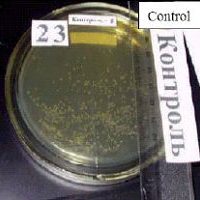
(a) Control:
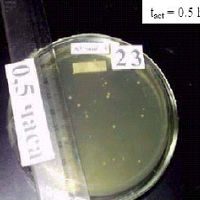
(b) MRET activated, tact = 30 minutes:
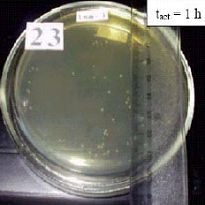
(c) MRET activated, tact = 60 minutes:
Fig 2: Petri dishes after 23 hours of the experiment.
This experiment also revealed the strong effect of MRET activated water on the process of division of E.coli microorganisms, the modification of forms of culture cells and the size of colonies. It was observed that one of the reasons of abnormally low growth of E.coli bacteria was related to the modification of the process of cell division in MRET activated nutrient medium. In the process of growth and reproduction a large number of cells did not separate from each other and the linear line-ups consisting of 2-3 sequentially paired cells were formed. The culture cells grown in non-activated and MRET activated medium are shown on Fig 5 and Fig 6 respectively.

Fig 5: Cells of Escherichia coli K-12 grown in non-activated medium.

Fig 6: Cells of Escherichia coli K-12 grown in MRET activated medium (tact =1 hour).
II. The effect of MRET activated water on metabolic activity of E.coli bacteria in aerobic and anaerobic environment
Reductant activity is an integral characteristic of metabolic activity of microorganisms and it is measured with the help of Sodium Resasurine color indicator in the percentage degree of discoloration (purple = 0%, red = 50%, transparent = 100%). The reductant activity of E.coli bacteria reduced up to 3 times in 30 minutes MRET activated water and up to 1.6 times in 60 minutes activated water during the first 6 hours of an experiment in an aerobic environment (Fig 7 and 8).

K – Control; 0.5 – 0.5 hour MRET activated water; 1.0 – 1 hour MRET activated water; KSTER – reference to sterility

Fig 10: Reductant Activity of E.coli in 30 and 60 minutes MRET activated water and in Control non-activated samples (R0.5 - red color, R1.0 - green color, RC - blue color) in anaerobic environment.


